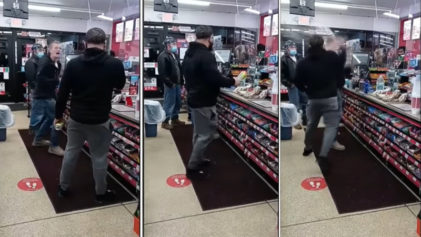Depending on context, the words student loans can evoke dreams or nightmares. For millions of Americans who otherwise might not realize their academic aspirations, student loans act as a lifeline to the collegiate experience, enabling their chances at whatever semblance of “the American Dream” remains. However, for a significant portion of those who borrow, paying these loans back can be a protracted, nightmarish struggle. As one of the highest consumer debt categories in the United States, second only to mortgage debt, 44 million student loan borrowers now carry more than $1.4 trillion in debt. The current student loan default rate for the nation is 11.5 percent.
African-American borrowers are disproportionately impacted by such debt. Federal data published by the Center for American Progress revealed that, 12 years after entering school, the typical African-American student loan recipient owed 113 percent of what they originally borrowed, with white borrowers owing 65 percent and, Latinx borrowers, 83 percent. Consistently, African-American and Latinx students are more likely to enroll in for‐profit colleges than white students and more commonly exposed to lower quality programs. Consequently, rates of repayment are lower among students attending costly for‐profit colleges as these students are often left with crippling debt and poor prospects for employment.
Along with the obvious financial burdens this debt can impose on individuals trying to make ends meet, the consequences of not promptly paying back student loans are increasing. In 20 states, an individual’s professional license — and, occasionally, a driver’s license — is, increasingly, being suspended if he falls behind on student loan payments.
“It’s not a good idea to take punitive action against thousands of people who are really dealing with some complex student loan issues,” said Charlene Crowell, communications deputy director for the Center for Responsible Lending (CRL). Crowell noted the impact on employment and mobility for individuals “grappling with a seized or suspended license” and how it can “disrupt the rest of their life.”
While most states don’t track such information, a recent investigation revealed over 8700 cases in which professional or driver’s licenses were taken away or put at risk of suspension as a result of borrowers falling behind on student loan repayment. The racial implications of such practices are considerable.
“The problem for people of color and, particularly, African-Americans is that we borrow more because we, by and large, have less family wealth,” said Crowell. “So while we value higher education and believe in its rewards, the fact is, when loans are really challenging for people to repay, there’s a rippling effect of consequences and severity that affect the borrower,” she explained, describing it as “an unsustainable situation.”
Still, some view the license suspension policy differently. “It’s an attention-getter,” said Peter Abernathy, chief aid and compliance officer for the Tennessee Student Assistance Corporation, a state-run commission. “They made a promise to the federal government that they would repay these funds. This is the last resort to get them back into payment.”
But Crowell believes the dilemma to be far less clear-cut. “I think it is an unfortunate development in a continuing saga that has so many dimensions that stem from the heavy student loan debt that the nation has.”
There are two types of student loans, federal and private, with federal constituting 90 percent of total loans. Student loan servicers are contracted to assess borrowers for income‐based repayment programs, discharges or other plans for managing monthly payments. To collect on unpaid federal loans, the government can garnish wages, deduct from tax returns and social security payments. However, for private loans, borrowers are not eligible for any of the repayment programs, discharges or protections provided by federal law, which is why states commonly offer protections against abusive collection practices and wage garnishments.
While such abuse is separate from suspension of licenses by state institutions, it has significantly contributed to the total amount of student loan debt in America. In January 2017, the Consumer Financial Protection Bureau (CFPB) sued Navient, the nation’s largest servicer of federal and private student loans — and formerly part of Sallie Mae — for “systematically and illegally failing borrowers at every stage of repayment.” Through shortcuts and deception, the “company also illegally cheated many struggling borrowers out of their rights to lower repayments, which caused them to pay much more than they had to for their loans.”
The CFPB suit further charged that Navient steered borrowers into forbearance, a status where borrowers can temporarily stop making payments, but where interest continues to add up. “From January 2010 to March 2015, the company added up to $4 billion in interest charges to the principal balances of borrowers who were enrolled in multiple, consecutive forbearances.” Unfortunately, these abuses, along with draconian measures of collecting outstanding student debt, will likely continue given the Trump administration’s rollback of existing protections, including key Obama-era safeguards against companies with a history of fraudulent practices.
To further complicate matters, student loans are not easy to discharge in bankruptcy, given the borrower has to document and prove how that repayment will impose a substantial hardship on their life and family. “Courts use different tests to evaluate whether a particular borrower has shown an undue hardship,” according to the National Consumer Law Center’s Student Loan Borrower Assistance Project, a nonprofit resource that advocates for borrowers. The most common standard is the Brunner test requiring a debtor to show that they cannot maintain a “minimal” standard of living if forced to repay, that “this state of affairs is likely to persist for a significant portion” of the repayment period, and that they have made “good faith efforts to repay the loans.”
Yet some see a lack of good faith in suspending a borrower’s drivers license because of their inability to promptly pay off their student loans.
“It’s not a helpful solution to the problem,” said Crowell. She stressed, “It is important for people to speak up and alert elected officials to these problems affecting their lives because of their struggle with onerous student debt.”
“I personally think,” added Crowell, “there has to be a better solution for loan repayment than to seize a license or suspend it.”


